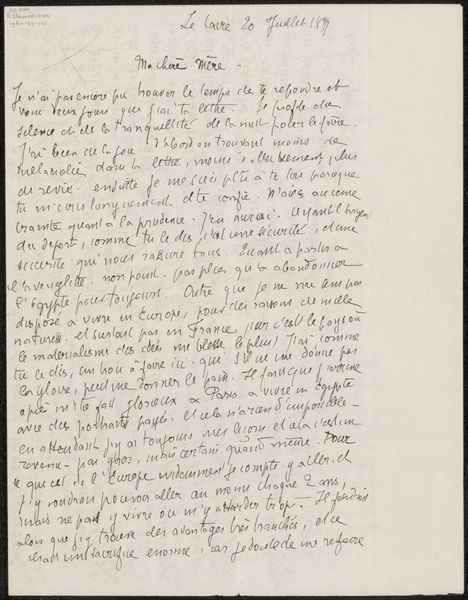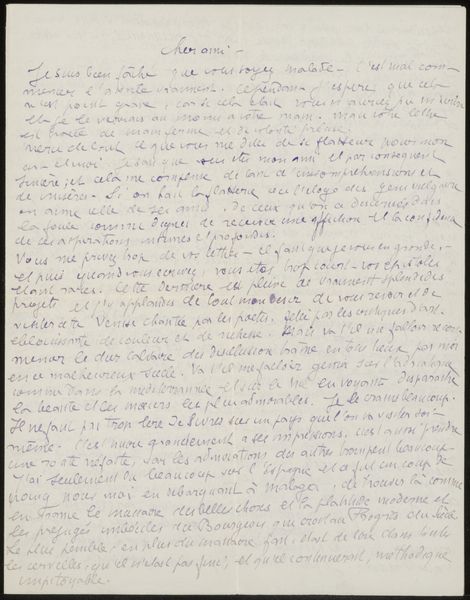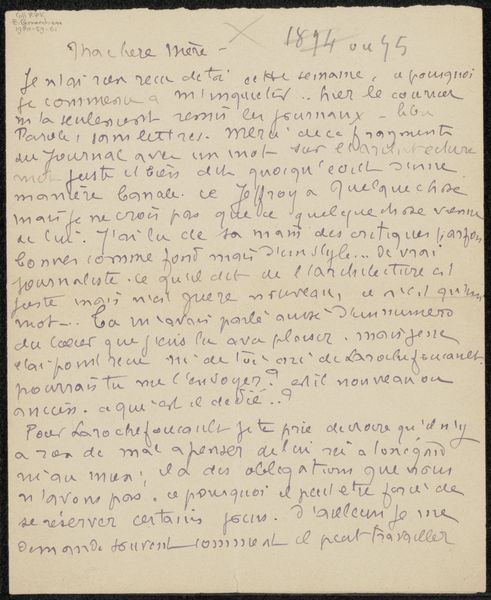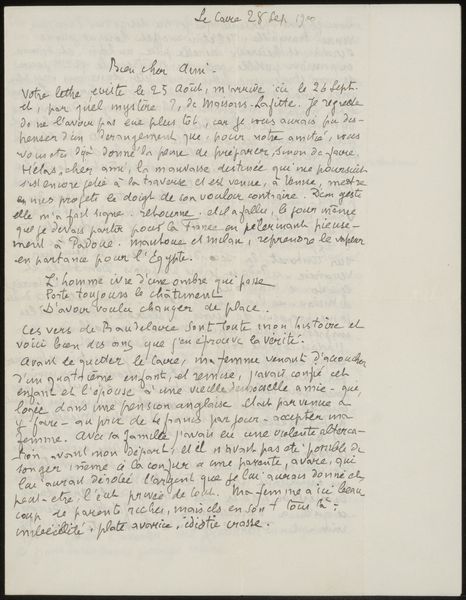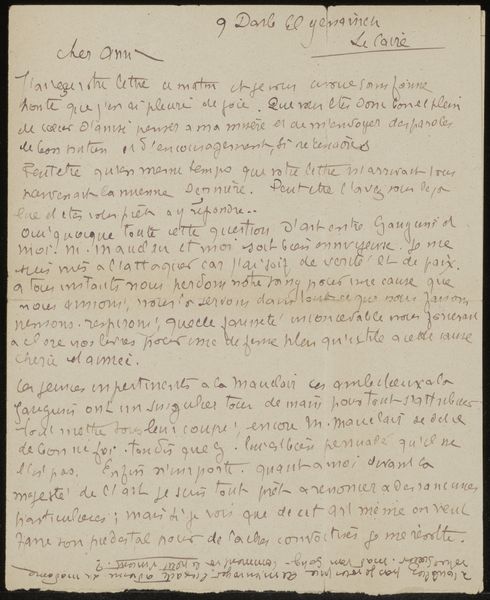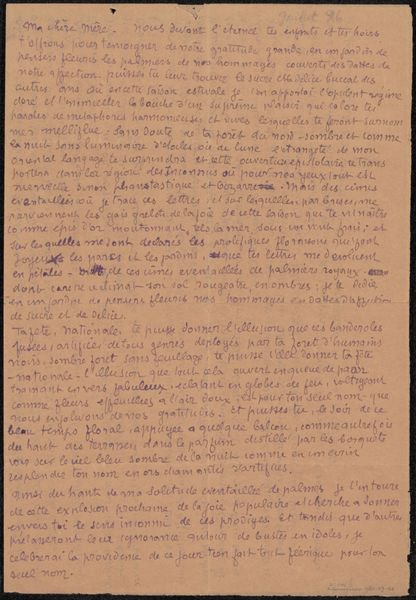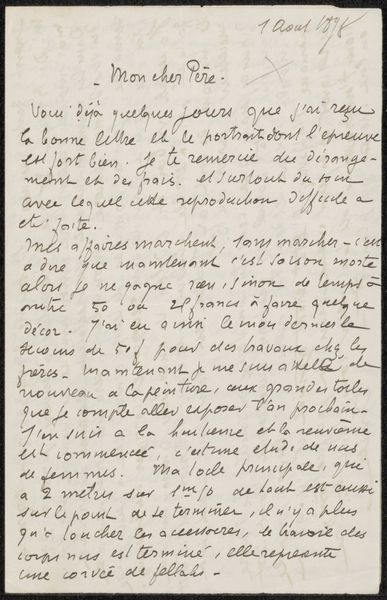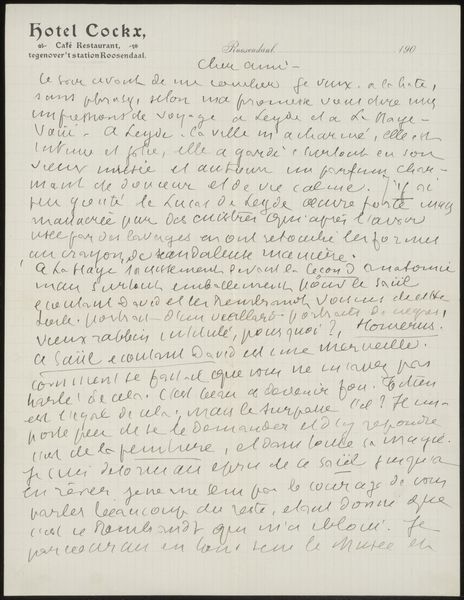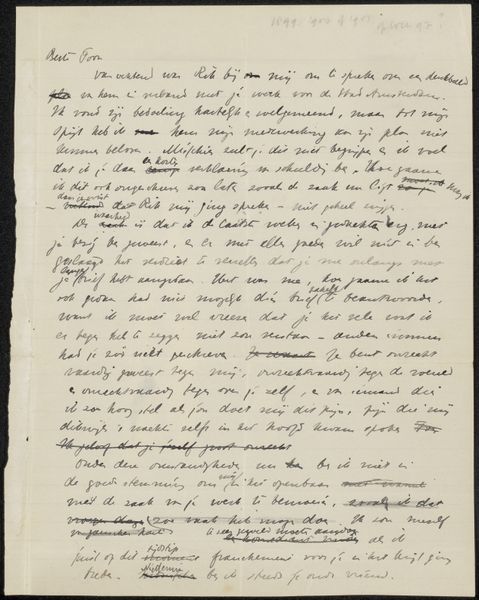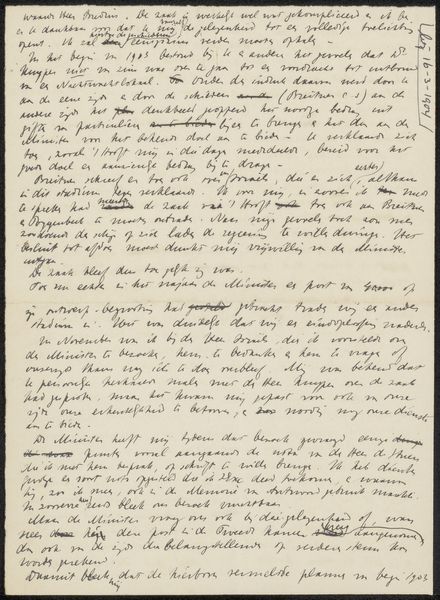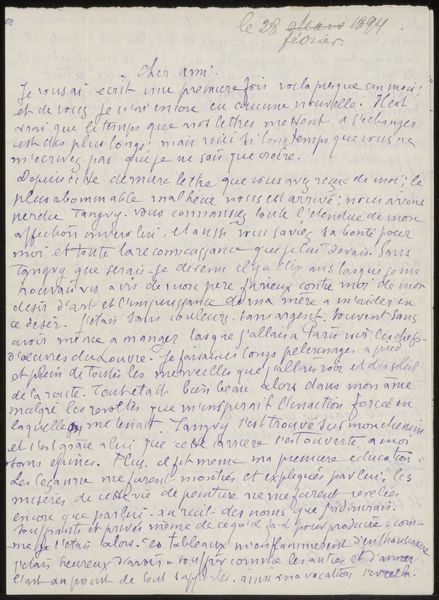
Copyright: Rijks Museum: Open Domain
Curator: So, what’s grabbing your attention today? Editor: We’re looking at "Brief aan Héloïse Bernard-Bodin," a letter by Émile Bernard, possibly from 1899, made with ink on paper. It's covered in flowing cursive, which creates an intimate mood, as if you’re catching a glimpse of a private conversation. What do you see in this piece? Curator: The immediacy of the handwritten word pulls us in, doesn’t it? Bernard’s letter offers more than just artistic value; it's a window into the social dynamics of the late 19th century. It invites us to consider how personal correspondence functioned within a society shaped by distinct class and gender roles. We might ask, who was Héloïse, and what was the nature of her relationship with Bernard? Understanding her social standing and their connection could unveil so much about the context of this exchange. Editor: That's a really interesting point! I hadn’t thought about Héloïse beyond the context of the letter itself. Curator: And look at the act of letter-writing itself. In an era before instant communication, these handwritten missives held significant emotional weight. Can we, as contemporary viewers accustomed to immediate digital exchanges, truly grasp the anticipation and intimacy imbued in these historical texts? Editor: Absolutely, the patience involved in writing and waiting for a response feels so foreign now. So, in analyzing this work, we have to account for the fact that this form of communication comes from a specific place and time, shaping the letter's entire meaning. Curator: Exactly. It’s a valuable reminder that every artwork is intertwined with the social fabric of its creation. We can consider each curve and flourish in the handwriting as both an intimate and material manifestation of a specific cultural period. Editor: Thanks, I now understand it’s important to see beyond the surface of a letter and really consider its cultural and social context! Curator: It all informs how we approach interpretation and engage with art as a whole.
Comments
No comments
Be the first to comment and join the conversation on the ultimate creative platform.

